In my book, asparagus (Asparagus officinalis) is king of the edible perennial garden.
Producing tender spears early in spring, this veggie makes for delicious seasonal meals – and a sensational start to the year’s growing season.
Unlike some garden vegetables such as peas, which are self-pollinating, asparagus is dioecious, meaning some plants are male and some are female.
To reproduce, a honeybee or some other pollinator has to visit the flowers of both male and female plants.
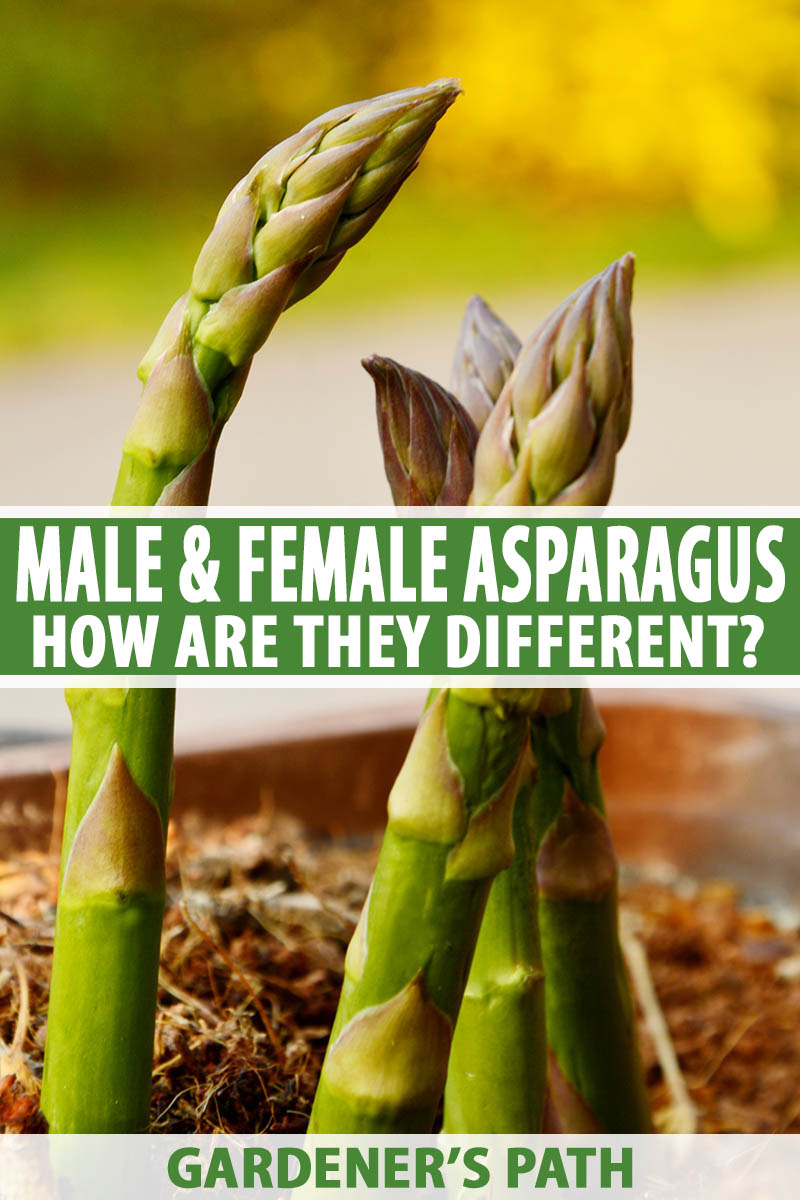
We link to vendors to help you find relevant products. If you buy from one of our links, we may earn a commission.
Since the differences in gender are meaningful when it comes to your yearly harvest tally, recognizing the gender of these plants can be a helpful gardening skill.
Are you ready to add this knowledge to your gardening toolkit? Good – I hear your resounding “Yes!”
But before we get started, here’s a quick overview of what I’ll cover:
What You’ll Learn
Gender Similarities in Asparagus
I realize you are eager to learn how to look at an asparagus plant and tell its gender.
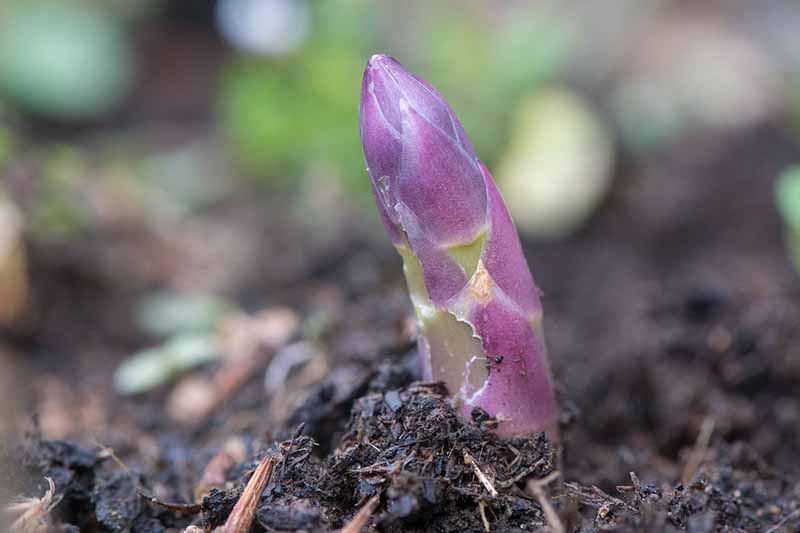
But before we go there, let’s start by examining the ways in which the two genders are indistinguishable:
- Both produce edible shoots or spears that grow from underground roots commonly called “crowns.”
- Spears from both genders grow into wispy, frond-like stems called “ferns” that can reach up to 7 feet tall.
- From these fronds, both genders produce small greenish white or yellow flowers.
Gender Differences in Asparagus
So, the gender of asparagus plants is pretty hard to distinguish up to this point – at least from a human point of view.
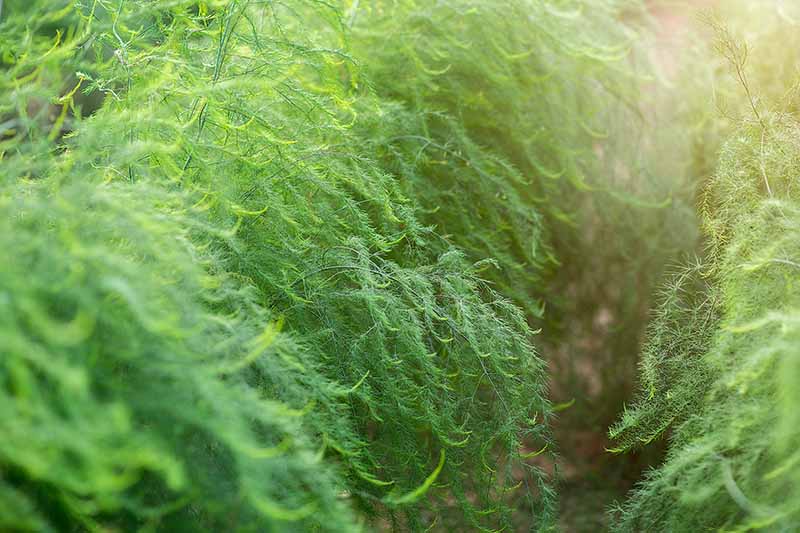
But we’re starting at the flowering stage, which means reproduction. This is where things tend to get more graphic, and gender becomes more easily discernible to the human eye.
Flowers
Even though both sexes produce flowers, the blooms of each gender aren’t exactly the same.

You can distinguish between genders by looking at the plants’ tiny greenish white or yellow flowers, which measure only around a quarter of an inch in length – so make sure you have your magnifying glass ready.

If you look inside the flower petals and see visible yellow or orange stamens, you have a male plant.
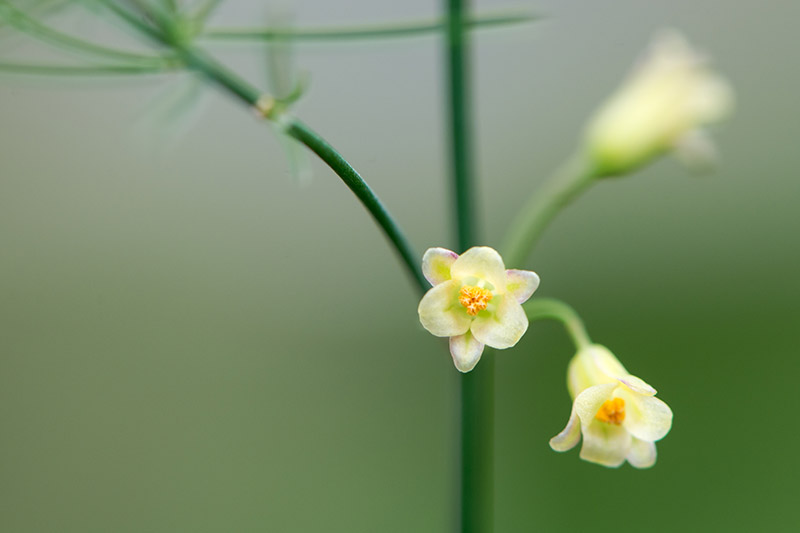
And if your peek beneath the petals reveals a green ovary and white pistil, you are looking at a female plant.
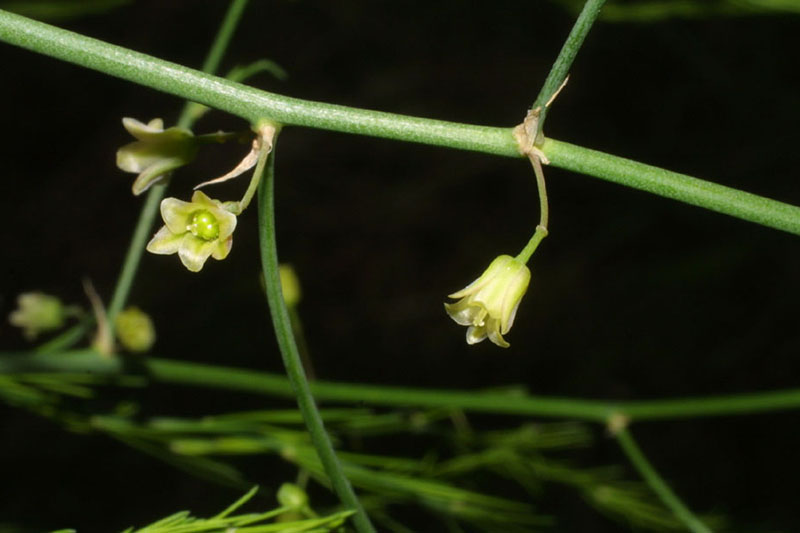
Another discernible difference between blooms is that male flowers are more bell-shaped than female flowers, which are more spherical.
Berries
If female flowers are pollinated, they will turn into berries – another important difference between the genders. Male flowers – except on very rare occasions – do not turn into berries.
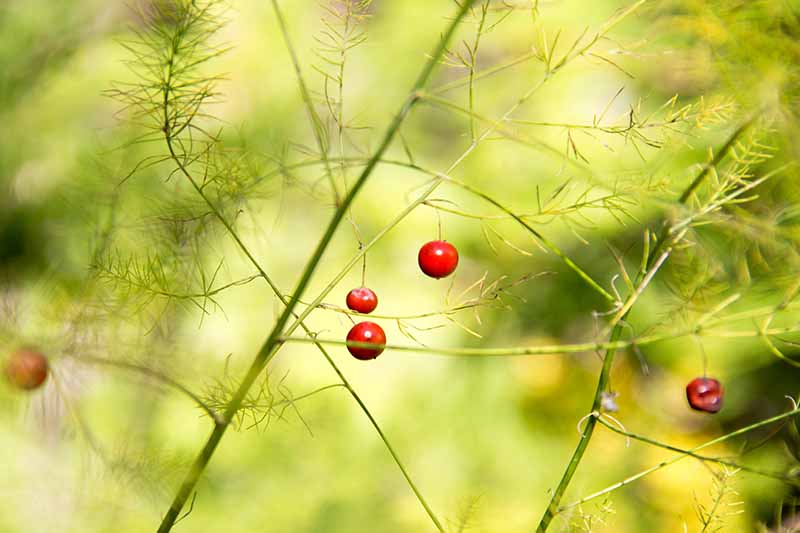
If you have just planted your crowns, your female plants may not develop berries until after the first year.
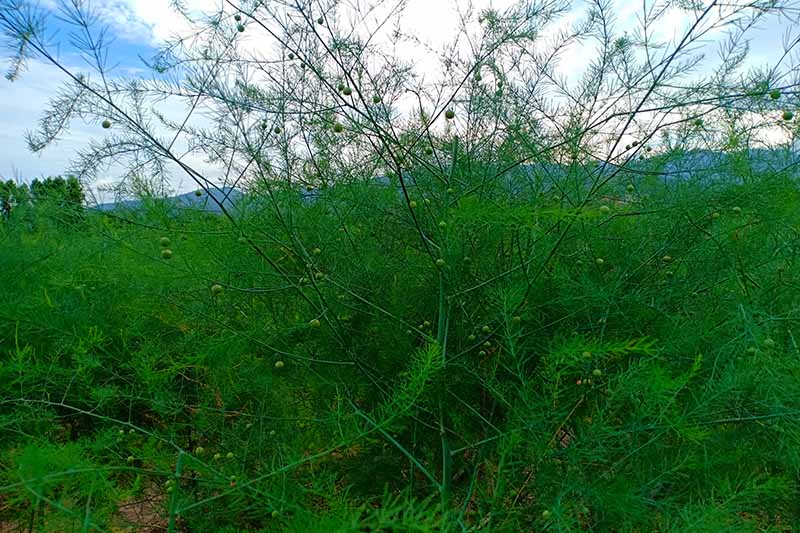
Berries start out green and then gradually ripen to red in late summer or fall.
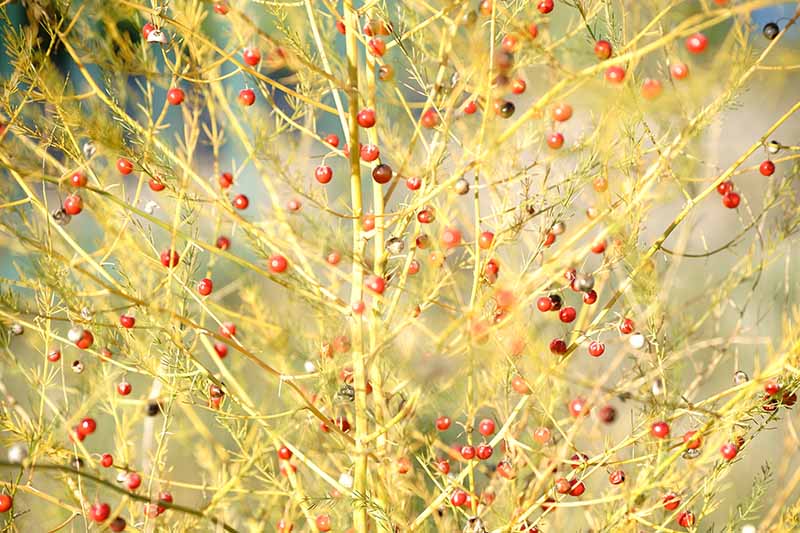
You’re probably wondering about the rare occasions I mentioned earlier. While rare, there are the occasional male hermaphrodites which self-pollinate and produce berries.
In the majority of cases, though, males do not produce berries.
Ferns laden with berries can tend to break or bend to the ground, and contact with the wet soil below can introduce fungal growth.
Before berries mature, some gardeners will dig up and remove female plants, crowns and all, and remove them from their beds.
In addition to acting as a measure that can prevent the spread of fungal diseases that may harm the health of your plants, there are other reasons why this may be a good idea.
I’ll cover these in the following sections.
Volunteers
Next on our list of differences, we have the issue of volunteers – also known as weeds, depending on your perspective.
When your plant has berries, the possibility of babies sprouting from the seeds they contain exists, whether you want them or not. Each berry typically contains one to six seeds.
Many gardeners see these unplanned seedlings that pop up in the asparagus bed (or other parts of the garden – thanks, birds!) as a nuisance, since volunteers can take nutrients away from your established crop and crowd the bed.
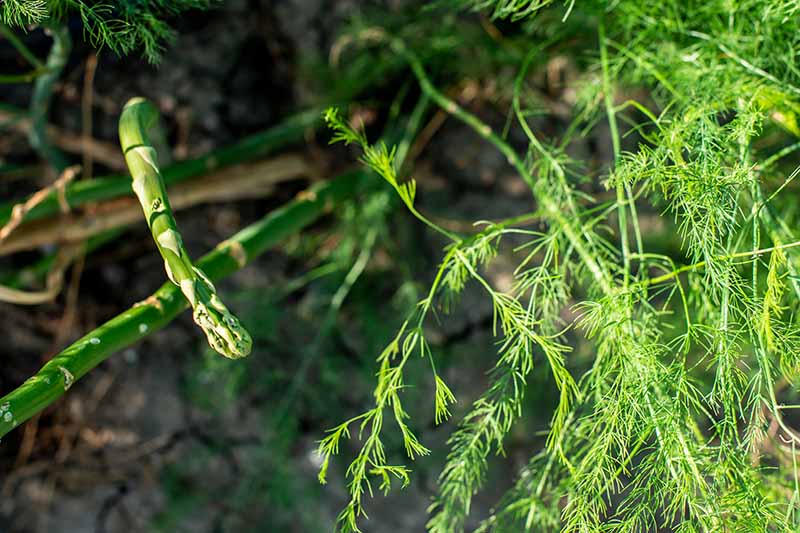
While volunteers can sometimes be seen as a good thing, an easy way to get free seedlings that you don’t have to worry about starting yourself, asparagus usually lives for 15 to 20 years.
With an established crop, you already have a long term investment that you may not need to renew very often.
Males do not generally produce berries, so they do not generally produce volunteers.
Yield
Since males do not have to expend valuable energy on berry production, they are often more long-lived, and they are able to put more of their energy into spear production.
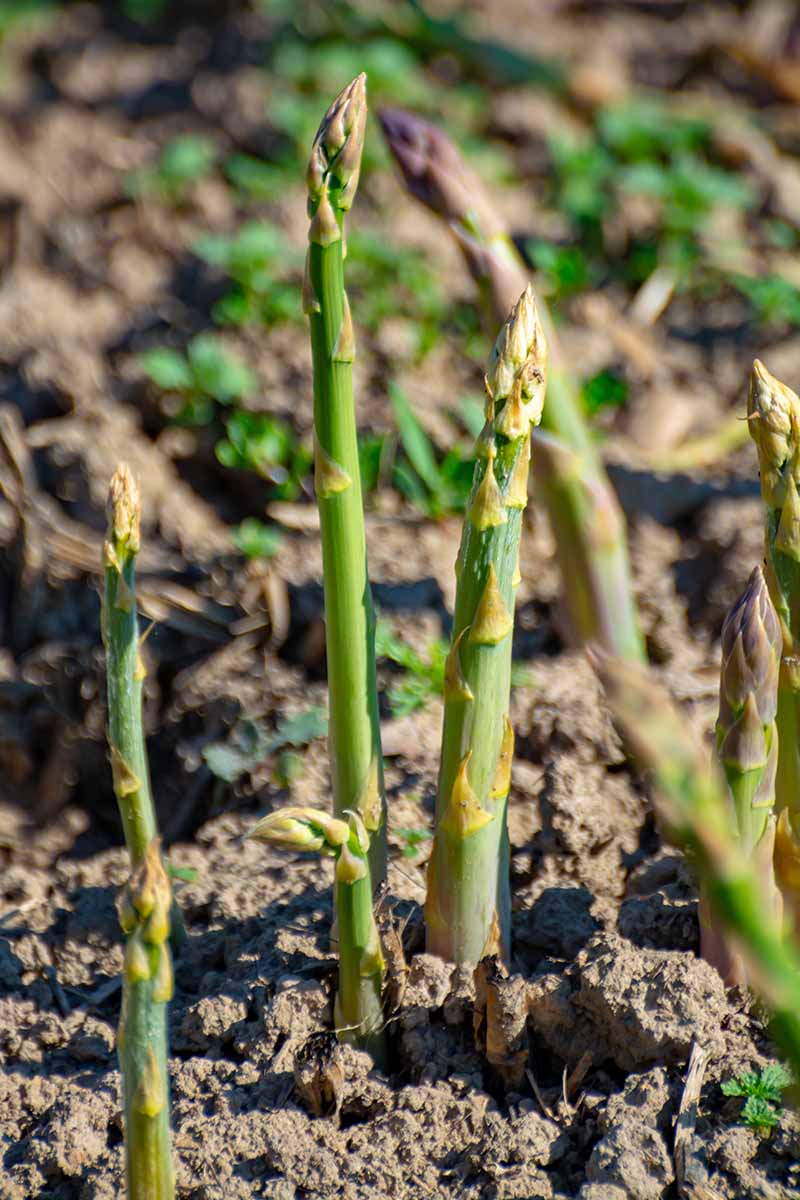
Among commercial growers of this crop, they are considered more profitable than females because of their higher yields.
All-male hybrids, which are hybrids selected to eliminate most female plants, are even more productive.
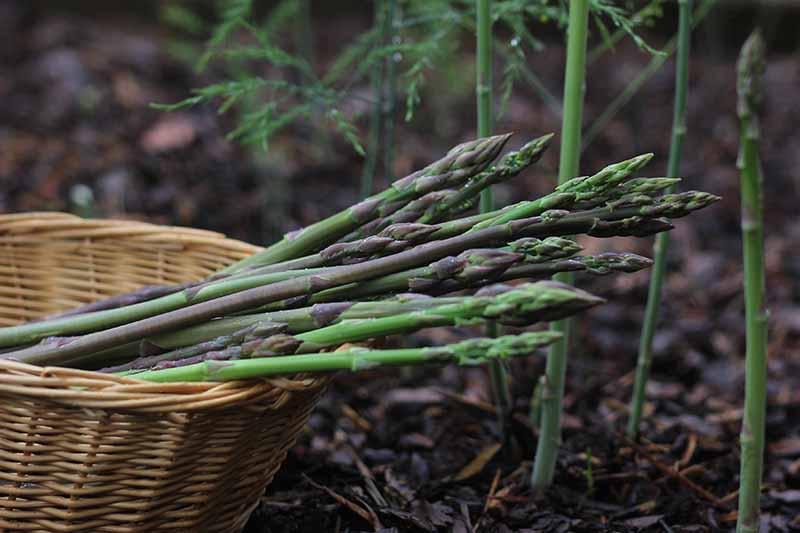
And all-male asparagus crowns are often more expensive as well.
Increases in productivity with these hybrids are extreme, allowing for three times the average yield of heirloom cultivars.
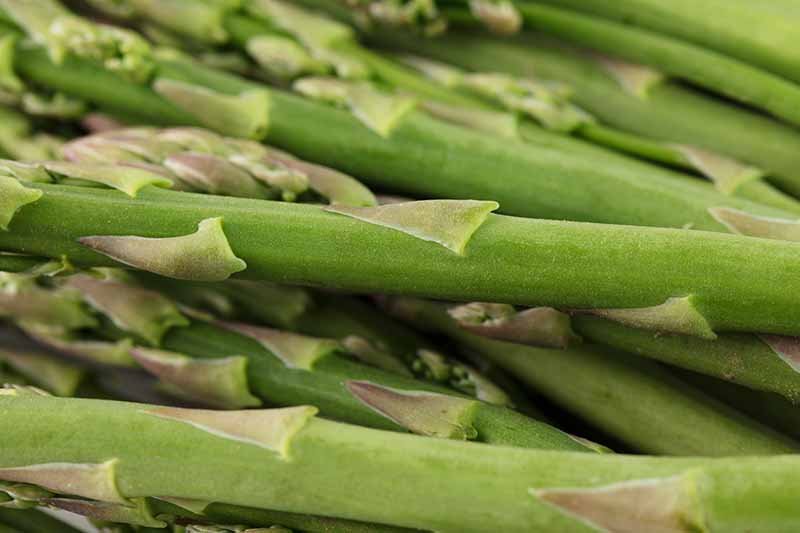
You can read more about these all-male hybrids in our asparagus growing guide.
Spear Size
Not only do all-male hybrids produce more spears, they produce larger ones.
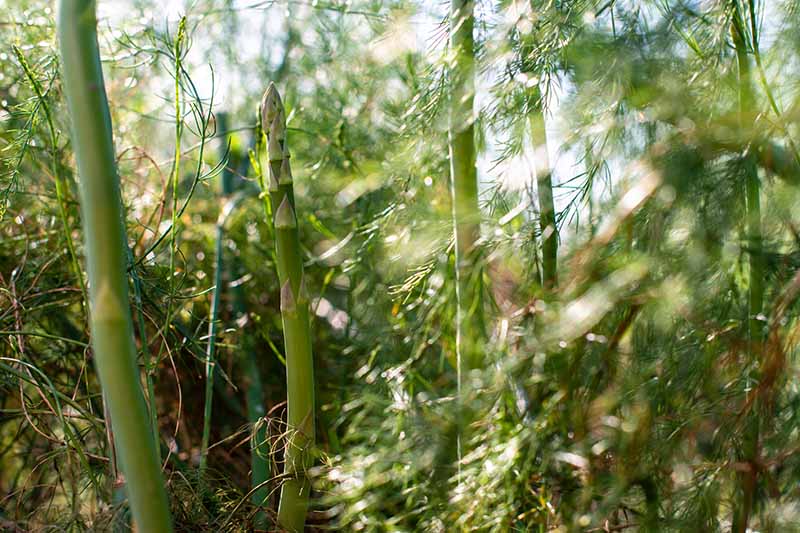
And these larger-sized spears are typically more desirable.
According to Jack Rabin, Professor Emeritus at Rutgers University, “The larger diameter spears have superior culinary qualities of tenderness and sweetness.”

Male plants often produce spears earlier in the season than females as well.
Spearhead an All-Male Bed
Some gardeners swear by store-bought all-male asparagus crowns for planting, while others love starting plants from seed, and saving their own seeds to grow yet more plants.
Now that you’ve had a crash course in (plant) gender inequality, you know that male asparagus plants are the ones you want for more abundant harvests, occasional or nonexistent berries, and no volunteers.
If you want to save your own seed, having both male and female asparagus plants is a necessity.
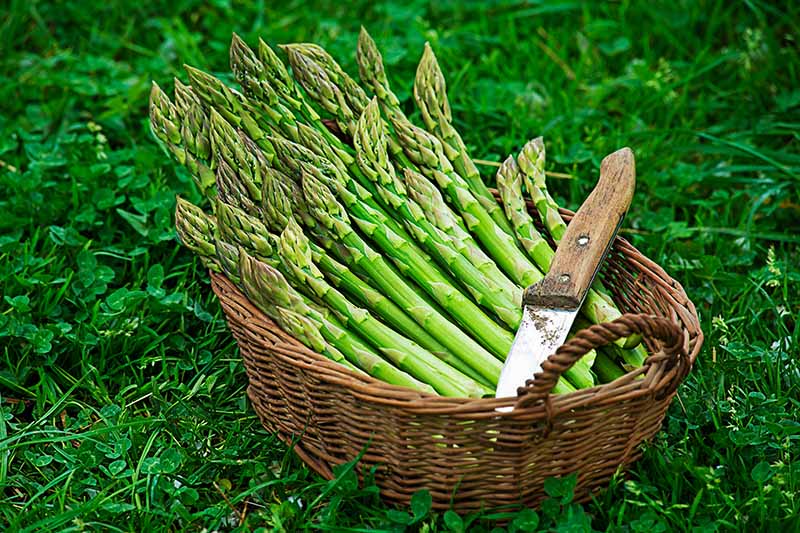
After learning to differentiate male from female asparagus plants, will you let the ladies stay in your garden? Or will you turn it into a boys club? Let us know in the comments.
Ready to learn more about growing asparagus? Check out some more of our detailed guides such as:
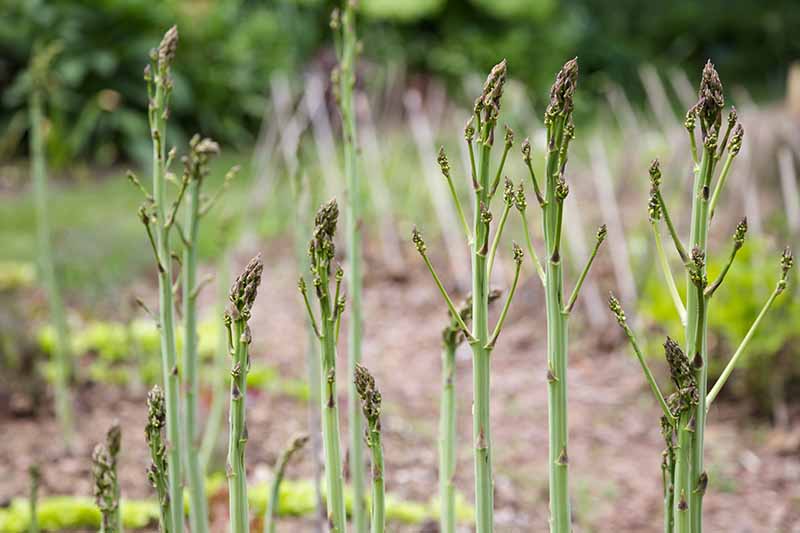



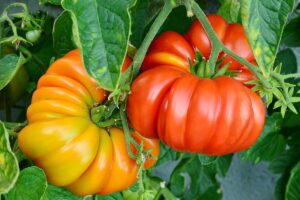
Thanks for the clear and illustrated info. I think I have all of the above in my bed I just didn’t know the difference. Now to read about what to do with the volunteers.
Hi Carrie, Glad you found the article helpful!
Very helpful! Thanks! I can’t wait to give them a closer look. Another question, over the summer, when the asparagus grows tall and ferny, they want to bend down under their own weight, and especially in the wind. Should I let them go down? Or should I string them up?
Hi John! Glad you found the article helpful.
Staking is not really considered a necessity but if you have so much wind that the ferns are breaking, then yes, I would stake them (or string them up).
Here’s why – the ferns that grow up after the spring harvest are doing their job producing energy for next year’s crop. The more energy they can produce – the better crop you should have next year.
So if you need to protect them in any way to keep them doing their job, then, you might want to!
Hope this helps!
Yes, it’s fine to let them bend, and many gardeners do. Falling is a natural process – it’s how they reseed – but unfortunately this can have a kind of unattractive appearance. I suppose you could tie them up, if you want to go to the trouble! Whatever you do, wait to cut the fronds until they die back in the fall, or in late winter before new spring growth emerges.
I’ve always found the young, skinny spears to be the most tender. But in the article it says: “The larger diameter spears have superior culinary qualities of tenderness and sweetness.” I’m not sure about that. I’ve been growing asparagus for about 20 years and I plant by berries every year to replenish my supply. My question is, how old does a plant have to be before it starts producing berries? My young ferns (2-4 years old) have yet to produce flowers. Thank you for the info. Heather
Hi Heather, Those small skinny spears are very tasty – I think they have a nuttier taste than the larger ones and I prefer them too! However, really small skinny spears (less than pencil size) should be left to turn into ferns, producing food to nourish the plant’s crown. I don’t know if you have been harvesting these from your young plants but if so, I wouldn’t be surprised if it affected your plants’ ability to produce flowers and berries. If they aren’t able to produce enough ferns, they may not have energy left over to reproduce. Sometimes these plants… Read more »
I recently planted asparagus from seed. I have 30 plants that have sprouted in separate pots inside and I also planted the remainder of my seed package directly in my garden. They all seem to be coming up. Can I plant them all together in the same garden and remove the female plants next year. The garden would be rather crowded. I’m assuming that I won’t be able to differentiate the males from the females until next year. I don’t want to thin them all out now and end up with mainly female plants.
Hi Lesley, Congrats on your asparagus seedlings – they look great! Sounds like a fun gardening project. If you plant your transplants now, they may or may not produce seed this year. You may be able to recognize them as male or female this year, or you may have to wait until next year. So the thing to keep in mind would be that asparagus spears grow from their roots (aka, “crowns”). That means that if you want to thin them, you will have to dig up the crowns of the plants that you don’t want to… Read more »
Is there a way to differentiate the seed from the berry as male or female before planting?
Hi R.A.,
No I’m afraid not. I read about a research experiment that used DNA extraction to determine asparagus gender from young seedlings, but apparently in the seed form the plant gender is still quite hidden.
Boy’s Club!
I ordered male starts online last year and this year my garden produced many berry-filled plants. I guess that didn’t turn out as planned, right? But happy to have asparagus anyway.
Hi Rachel,
It’s possible you were sent some hermaphrodites, but yes, most likely they are females. Personally, I don’t mind the berry-producing females – the berries are gorgeous, and if you want, you can always save seeds from them!
A year and a half ago I bought 10 all-male Jersey Knight crowns online. In the spring seven of them produced spears that I left to fern out. One spear from one crown produced berries that I harvested. We planted its seeds indoors in the spring and got about 20 new plants. They are now among their older relatives and are doing well. The originals are ferning-out at about 6 feet tall. I will probably try to harvest any berries before they fall, rather than over-populating the garden. I’ll probably start another patch of asparagus in another area of the… Read more »
Hi Bob,
Thanks so much for sharing your experience with growing asparagus! I like your plan to harvest berries rather than letting them re-seed at will. Best of luck with your new asparagus patch!
I have a 60 year old asparagus patch that has a couple berry/seed producing plants. In the fall of 2020 I collected a 1/2 cup full of the red berrys/ seeds and in February of 2021 I planted a 72 cell flat. I put 3 seeds in each cell and culled to exactly 72 healthy little shoots. At 5 weeks I reset each into red solo cups. I use led grow lites timed for 16 hours on. After Memorial day last spring I planted a two row patch putting the sets 20″ apart. All of them made it through the… Read more »
Hi Mike,
Thanks for sharing your asparagus growing adventures with us – both your old and new patches are quite inspiring!
Happy gardening!
This was so informative and helpful, as I am starting my 2/3rd year with homegrown from seed/purchased crowns.
I don’t think I’ll start a boys club, as I currently have just under 100 plants in the bed (as yet unsexed) so we should have plenty for the two of us and enough to bless others once everyone reaches full productivity!
Thanks for taking the time to record all of this to help folks like us!
Hi Nancy,
I like your approach!
Thanks for taking time to leave a comment – we’re happy to know this article has been of help.
Happy gardening!